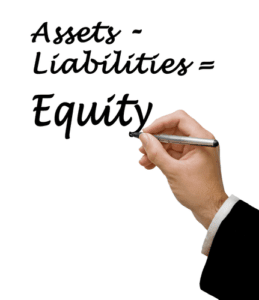
Some freelancers also charge late fees for clients that don’t pay on time. If you charge late fees, include the penalties and fees in this section of the invoice, as well. Freelancers have the flexibility to offer a variety of payment options, such as online payments through PayPal or ACH bank transfers. Clearly state the payment option you negotiate with the client at the bottom of your invoice. This is a significant feature of any billing document as it signifies the day on which the freelancer issued the invoice. This date is crucial in determining the payment schedule and is a key reference point for accounting and tax purposes.
Payment options
You can add extra payment details or any other information you’d like to pass on to your client. Once you’ve chosen your preferred template, you can then edit it. If you have company or personal logos or designs, you can add those in so that the invoice reflects your branding. The date the invoice was issued often dictates the payment due date (commonly 30 days from issue) and helps your client know when payment is expected. Accurate details help it reach the correct person within the company so you can avoid unnecessary payment delays. VAT is due on all invoices sent to a local business (e.g., if you’re incorporated in the UK and invoice a UK business, a 20% VAT rate applies).

How to Invoice as a Freelancer: The Complete Guide
- Sometimes, you’ll encounter late payments or clients who flat out refuse to pay.
- Consistent invoicing is vital to project professionalism and organization.
- Using templates alone, you don’t have a centralized system for easy storage.
- But both of these payment options have a few days of processing time, so make sure that you factor that into your billing procedures.
Longer payment due dates are a good option for large payouts, and shorter due dates are fine for smaller payments. Freelance invoice templates are great because all the fundamentals are there for how to invoice as a freelancer you. You can save them digitally, making them easy to access later when you need to create a new invoice. In this guide, we cover everything you need to know about invoicing as a freelancer.
- Ensuring that your final invoice is accurate and includes all relevant information will help facilitate prompt payment and maintain a professional image in the eyes of your clients.
- Download Black by ClearTax App to file returns from your mobile phone.
- This is typical in the design industry, so consider yourself warned if the client refuses to pay up.
- No matter how much you love your work, you still need to get paid!
- These details should be confirmed in advance by the client, in writing, to eliminate the possibility of them claiming the invoice was sent to the wrong person or company.
- A freelance invoice is a document used to request payment for provided services.
Best Practices to Send Your Invoice
They estimate the cost of goods or services before they are provided, giving both you and your client a clear understanding of the expenses involved. All you need is to fill in the details and then send your email via email, in the mail, or any other channel you choose. A recent survey found that 74% of freelancers aren’t getting paid on time regularly.
Including payment details on your invoice alerts the client to how you want to be paid and reminds you of the payment method you’ve negotiated with each particular client. To facilitate prompt payment and avoid confusion, prominently display the total amount due at the bottom of your invoice. This clear indication of the outstanding balance ensures that clients are fully informed of their financial obligations and can make timely payments. In addition to that, a quote can be estimate-based, while an invoice details the exact amount due. For example, you can quote a three-month project and arrange monthly payments with your client.
How to Create a Freelance Website: The Complete Guide
That way, you can set up your freelance business for success by spending more time doing what you do best rather than struggling with admin work. Keep in mind that most clients take their businesses seriously and want to pay outstanding invoices as soon as possible. That said, work and personal life can sometimes get in the way, resulting in a late payment.
Key Benefits of Using Pay-By Links
Interim invoices help freelancers maintain a good cash flow while working on longer, more complex projects. Creating a freelance invoice is crucial for clear communication and smooth financial transactions between freelancers and clients. An effective https://www.bookstime.com/ invoice should consist of several elements, such as contact information, itemized services, and payment terms. Depending on how long you’ve been in the freelance business, you might want to use dedicated software in your invoicing process.

Do I add tax to my invoice as a freelancer?
Mobile payments let people pay using their cell phones and other mobile devices. Examples include Venmo, CashApp, and digital wallets like Apple Wallet. Checks are convenient because they provide a paper trail for your records. You report freelance income by filling out Schedule C (Form 1040) along with your regular tax return.
How to start a business in Lithuania from the UK
This ultimately leads to a more streamlined invoicing process, allowing you to get yourself paid faster and focus on growing your freelance business. Timely invoicing is a cornerstone of freelancing, promoting smooth workflow and avoiding possible miscommunication with clients. Sending invoices promptly upon project completion not only establishes trust between both parties but also helps create a professional image for your freelance business. Including a business name in your invoices is vital to portray professionalism and make your invoices easily recognizable. In addition, reminding clients of their payment responsibility can assist in guaranteeing prompt payment, ensuring a healthy cash flow for your freelance business. Invoicing is an integral part of the freelance business, as it directly impacts cash flow and client relationships.
Note Accepted Payment Methods and Instructions

If a client has any issues or you need to track down a payment, you’ll be able to use the invoice number to easily find the relevant invoice. Although your invoices are useful for the client you’re billing, they also help you keep a record of the work you’ve done and your income. Make sure to include your name (or business name, if applicable) and address. Include your email and phone number, in case the client wants to contact you.





